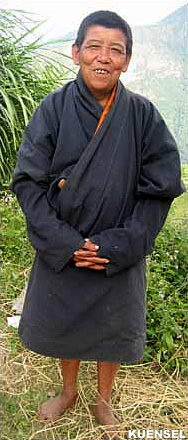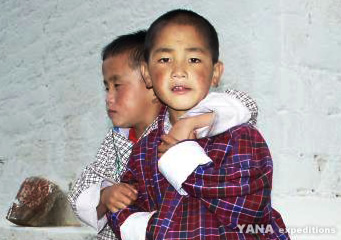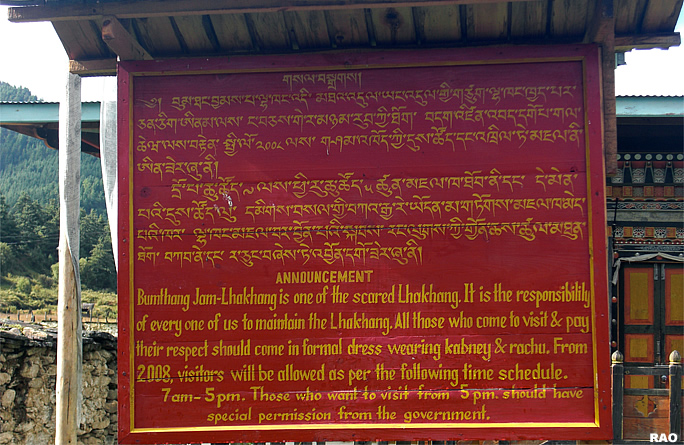| Bhutanese
Traditional Dresses |
 |
Bhutan Culture |
|
 |
Bhutan Information |
|
|
 |
|
A preference for the Gho
|
 |
| Abi
Tsodon |
| Any
new comer to Bikhar village in Trashigang would surely mistake Pema Tsodon
for a man. The 56-year-old woman, better known as Abi (granny) Tsodon
in the village, is always dressed in a gho (the robe worn by Bhutanese
men) with a knife tucked in her kera (belt) and her hair cropped
short.
Abi
Tsodon, now a widow, said that she had always worn thegho since her childhood.
"When I was a child my parents told me that they tried to dress me in a
kira (women's traditional wear) but I cried and insisted on wearing a gho,"
she saidl. "I have worn it throughout my life and I feel very comfortable
in it."
Abi
Tsodon said that as a young adult she did try wearing the kira several
times but she felt emotionally disturbed and just could not get used to
the idea of wearing the kira. "And now I hate the sight of those 'half
kiras' women put on these days," she said.
Abi
Tsodon has seven ghos given to her by some villagers and few given by her
son but she does not own a single kira.
Wearing
the gho, she said, was as normal to her as it was for men. "I married a
man wearing the gho, gave birth to a son and live a normal life like everyone
else."
Abi
Tsodon also wears the Kabney, the men's scarf, when attending festivals
or when visiting dzongs and monasteries. She has also never kept her hair
long. "In fact I prefer to shave it off," she said. |
|
 |
She
is also known for her strength to work. When most of the women in the village
were engaged in weaving and other household chores, Abi Tsodon was out
in the field working with the men.
"I
cannot weave because I never bothered to learn weaving," she said, adding
that she chose to do carpentry and was good at it. When there was woola
(voluntary labour contribution), Abi Tsodon represented her household while
it was men from other houses. "But now I am old and cannot work as before,"
she said.
| Villagers
said that Abi Tsodon was most of the time in the company of men
and worked twice as much as women.
Lam
Dorji, 32, said that as a child he always thought she was a man. "Later
when we worked together, we found that she was a woman and very strong,"
he said. "When we brought 25 numbers of bamboo poles she could bring along
more than fifty," said another.
Abi
Tsodon said that there were moments when people made fun of her for dressing
up as a man. |
|
 |
"But I do not take it to heart and think my wearing the gho
has got something to do with my deeds in my previous life," she said. "I
don't know what I will be born as in my next life but if born as a human
I would prefer to be born as a man.".
| Contributed
by Kesang Dema, KUENSEL, Bhutan's National Newspaper 2006 |
 |
| Information on Bhutan |
 |
|





